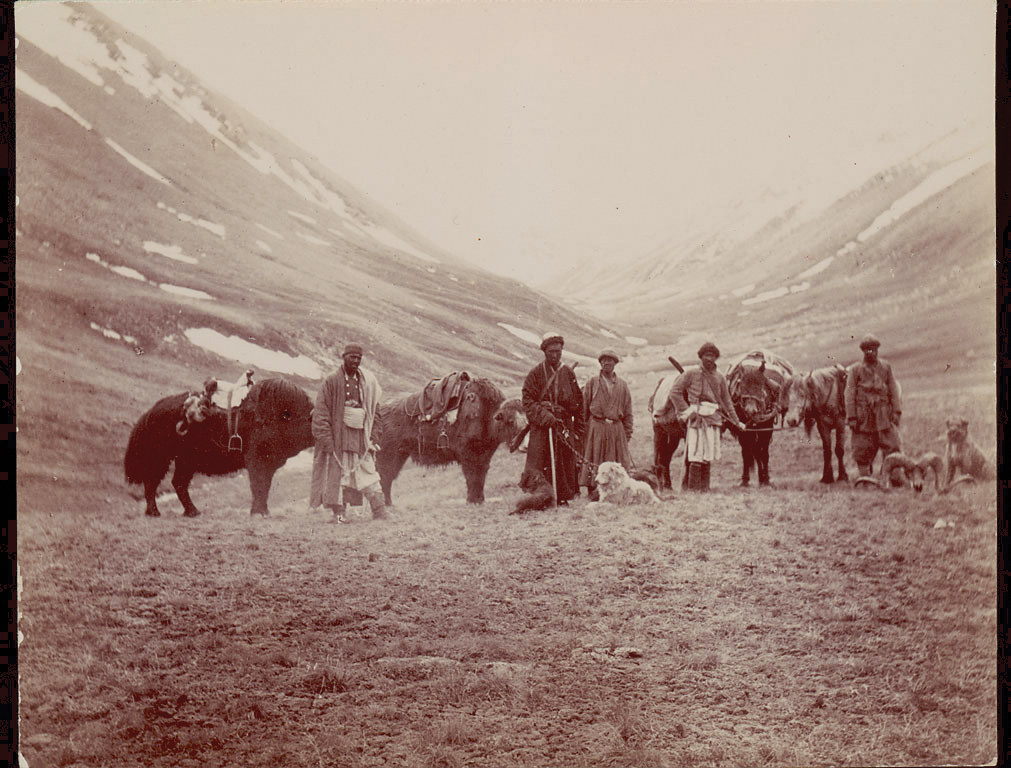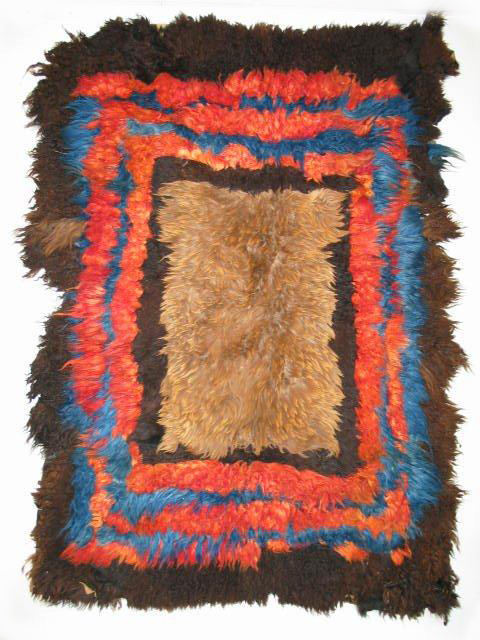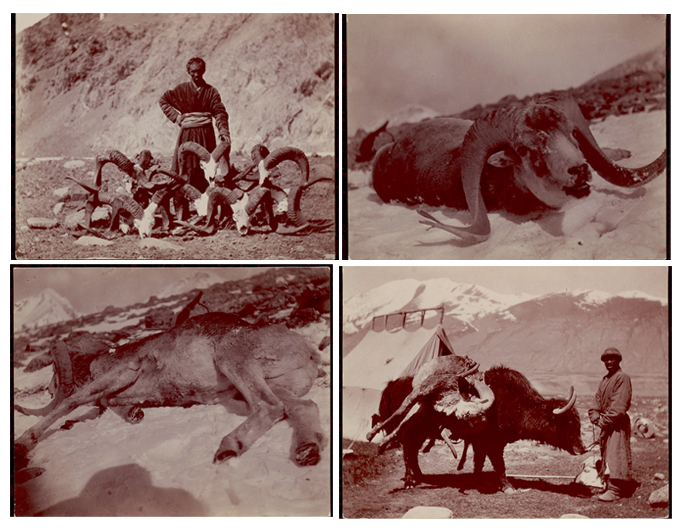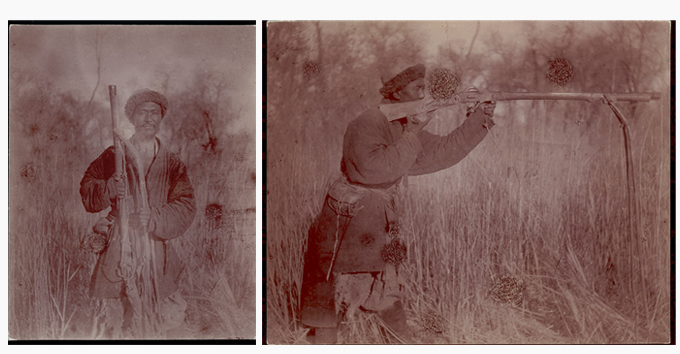The Hutsuls describe their lizhnyk rugs as samoridny literally self born.
Samoridny rugs called lizhnyk are created by Hutsuls, highlanders who have inhabited the Carpathian mountains of the Ukraine for centuries. Yavoriv village is famous for creating self born lizhnyks. 1
Ancient myth, magic, folklore, fable and customs bind the Hutsuls to nature, spawning the concept of self born or samoridny. Lizhnyk history spans four hundred years or more, the Hutsuls still weave lizhnyk rugs in the 21st century. The tradition of the lizhnyk is noted as being important for wealthy Carpathians in the 17th to 19th centuries and then dying out only to be revived in the 20th century. 2
Origins of the Hutsuls are clouded. Sarah Johnstone and Greg Bloom in their book "Ukraine" give the following description "They were first identified as a separate ethnic group at the end of the 18th century. According to some accounts, the "Hutsul" encompass several tribes - including Boiki, Lemi, and Pokuttian - so who and what they are is open to some interpretation. Ethnographers describe Hutsul life as dominated by herding sheep from high mountain pastures (polonyny) to lowland fields, with a little agriculture and forestry thrown in. They point to a dialect incomprehensible to other Ukrainians." 3 Another account has Romanian shepherds in the 13th and 14th centuries wandering with their flocks moving along the Carpathians into what is today the Ukraine. 4 Wikipedia records their origins in the Slavic kochul - "wanderer","migrant", in reference to their semi-nomadic lifestyle, to the name of the Turkic tribe of the Uzy.5 Shepherding and the nomadic life of heading for high ground in the summer and returning to lowlands in the winter are synonymous with long piled primitive rugs. Early shepherds settling in the Carpathians could have brought with them weaving traditions passed on through generations of nomadic ancestors wandering through time and space.
Lizhnyks are woven on handmade wooden looms. With deep respect for tradition the primitive looms are created with as much care as the lizhnyks themselves. The process of weaving begins with the selection of the highest quality local wool which is then washed. 6 Spinning wheels, vereteno, are employed to spin the wool. 7 Wool for the wefts is loosely spun and woven into a weft faced plain weave, this allows for the subsequent "softening" of the wefts in the valylo. Many different sizes and formats are produced from small items up to large bed covers to ward off the bitter cold of Carpathian mountain winters.
After the lizhnyk is woven it's taken down to the nearest stream and plunged into the "valylo". Water is channeled along the stream in a wooden structure known as a "dzholob" . Water gains momentum for some distance before it smashes into a water wheel inserted into the valylo. The lizhnyk is churned about in the valylo, also known as Валило, until the loosely spun wool wefts take on a felt like consistency. Once this intensive process is completed the lizhnyk is retrieved and dried in the sun. The final hairy woolen form of the lizhnyk is created by combing the rug in a similar manner as Anatolian and North West Persian blankets named after the town of Siirt in South Western Turkey. 8,9 Lizhnyk fibres are teased up forming a nap on both sides unlike the siirt's where the nap is only teased up on one side to form a raised design. The year 1515 is the earliest date where the use of the valylo is recorded. The method was known to ancient slavs in the 1st and 2nd centuries AD.10 Variations exist in the description of the process at the valylo, some simply describe this as a hole made in the river bed where the fibres of the lizhnyk are beaten until soft.

Hutsul women also wove kilims and weaving is an important part of traditional Ukrainian life, this is highlighted by the following account by Natalia Havryl’iuk of Hutsul funeral rituals. For women, tools associated with the fiber arts are commonly placed in the coffin. Thus, weaving implements, drop spindles, a distaff (kuzhil), a needle and thread, some wool or a plaited straw band (pereveslo) are items routinely placed in a woman’s coffin. 11
Samoridny lizhnyk's have many uses, as blankets, floor rugs, chair covers, and some even take the form of tailored jackets. When the Hutsul's say that their lizhnyk's will keep you warm in the winter they mean it, I've owned one for a few years now and with it's extraordinary samoridny properties it will out perform any Central Asian julkhyrs, Anatolian tulu, yatak or shaggy rug creation from Morocco for warmth. Lizhnyks are seen at wedding receptions or draped over chairs in halls. At funerals lizhnyk's are offered as gifts. Someone in the procession takes it upon himself to carry ritual food as well as sacrificial and memorial gifts to the cemetery. These are given out in commemoration of the deceased (na spomyn dushi, or among the Hutsuls, na prostybih). In Bukovyna, these gifts are called pomany and are especially numerous. They always include a kalach and candle, as well as a household item, such as rushnyk, kerchief, rug (nalavnyk or lizhnyk) and sometimes even a chicken or a sheep. 12 Also noted as being used in the church and at weddings, laid on the floor the lizhnyk is meant to bring wealth and happiness to the couple. "Lizhnyks are also used as rugs laid on the floor at home or in church. Before the worshippers enter, they take off their footwear — I saw it in a church in the town of Yavoriv, the centre of Hutsul lizhnyk-making." 13
Take a tour of the numerous small museums of the Carpathians, littered with examples of lizhnyk's, hung on walls, draped over chairs and on the floor. Alongside the many lizhnyk's are historic hand made looms.
Recently lizhnyk's have appeared in the international market in many varied colours, some with brightly dyed wool and others using all natural wool to form the diamond shaped patterns. Sometimes mistakenly referred to as Indian blankets.
For many examples of early Ukrainian weaving visit the The State Museum of Ukrainian Decorative Folk Art. The Museum Circle of Prykarpattja consists of many small museums housing examples of Lizhnyk's and looms. Of particular note is the Museum of folk art of Hutsulschyna.

The Ukrainian Museum and Library of Stamford contains many historic photographs of the Carpathians and Hutsuls at work and play.
Next time someone's ill or it's cold at your place consider the magical and warming properties of the samoridny lizhnyk, the self born rug from the Carpathian mountains of the Ukraine.
Bibliography LIZHNYK
1. "Lizhnyk" Welcome to Ukraine. Web 14 December 2006 http://www.wumag.kiev.ua/index2.php?param=pgs20034/20
2. "Lizhnyk" Ukrainian RUG blanket LIZHNYK 57"x30" wool handmade. Web. URL no longer available. 12 July 2006
3. "Hutsuls Sheep" Google books. Web. http://books.google.com.au/books?id=1CcQj3DjrHAC&lpg=PA140&ots=6N7BUiEs7J&dq=hutsuls%20sheep&pg=PA140#v=onepage&q=hutsuls%20sheep&f=false 14 January 2011
4. "Carpathians" Web. http://www.carpathians.pl/carpath_map.gif 14 December 2006
5. "Hutsuls" Wikipedia. Web. http://en.wikipedia.org/wiki/Hutsuls 15 January 2011
6. "Lizhnyk" Ukrainian RUG blanket LIZHNYK 57"x 30" wool handmade. Web. URL no longer available. 12 July 2006
7. "Lizhnyk" Lizhnyk - Traditional coverlet from Carpathians. Web. URL no longer available. 6 May 2009
8. "Valylo" Etnostyle. Web. http://www.flickr.com/photos/ethnostyle/5242003205/ With thanks to Lilya from Etnostyle for describing the process by which lizhnyks are felted using the Valylo and the final stages of drying and further teasing of the nap.
9. Wertime. J Back to Basics. Primitive Pile Rugs of West and Central Asia Hali 100 1998 pp.86-87.
10. "Lizhnyk" Etnostyle Lizhnyk Valylo Photographs.Web. http://www.flickr.com/photos/ethnostyle/5242003205/
11. "Ukraine Ethnography" Havryl’iuk, Natalia The Structure and Function of Funeral Rituals and Customs in Ukraine
Institute of Ethnomusicology, Folklore and Ethnography of the Ukrainian Academy of Sciences. Web. pdf https://journals.ku.edu/index.php/folklorica/article/view/3738/3577
12. ibid.,
13. "Lizhnyk" Welcome to Ukraine.op. cit.,
MUSEUMS and OTHER REFERENCES
The State Museum of Ukrainian Decorative Folk Art
The collection of rugs, carpets and hand-woven and printed fabrics
contains over 5,000 exhibits. Rugs and carpets alone are not very
numerous, but those on display in the museum give one an
opportunity to trace the development of rug-making in the Ukraine,
a craft noted for its distinctly national style and the great variety of
local peculiarities.
http://www.ukraine-gateway.org.ua/
Museum Circle of Prykarpattja
Museum of folk art of Hutsulschyna
The museum was created in Yavoriv village in October
1961 and transferred to Yavoriv secondary school in 2004.
It is located on the second floor of the school, occupies one
room with the area 36 sq.m. There are 255 main exhibits.
Museum profile: art. Among the interesting exhibits:
objects of wood, carved boxes, ceramics, homemade
weaved goods – “lizhnyk” (blanket-cover). Just lizhnyk
from Yavoriv village is one of the most popular kinds of interior weaving that accomplish both decorative and
customer functions.
http://en.museum.if.ua/
Ukrainian Museum and Library of Stamford Conneticut
The Library collection has in its holdings three albums of original photographs depicting the Carpathian Mountains and its inhabitants- the Hutsuls. The photographs were taken by Henryk Gasiorowski (1878-1947) in the 1920-30s. He was a Major in the Polish Army, a geographer and an author of one of the best tourist guide books to the Carpathian mountains and its environs, which was published in L’viv in 1933. He considered the Hutsul region to be on of the most beautiful corners of the Carpathians and the Hutsuls to be the most fascinating ethnographic group of people not only in the Halychyna area but in the whole of Europe.
http://www.ukrainianmuseumlibrary.org/
National Geographic Society Portrait of a Hutsul Village November 1997
Polec. Andrej Distant Glens and Moors: The Hutsuls Today Warsaw 1997












